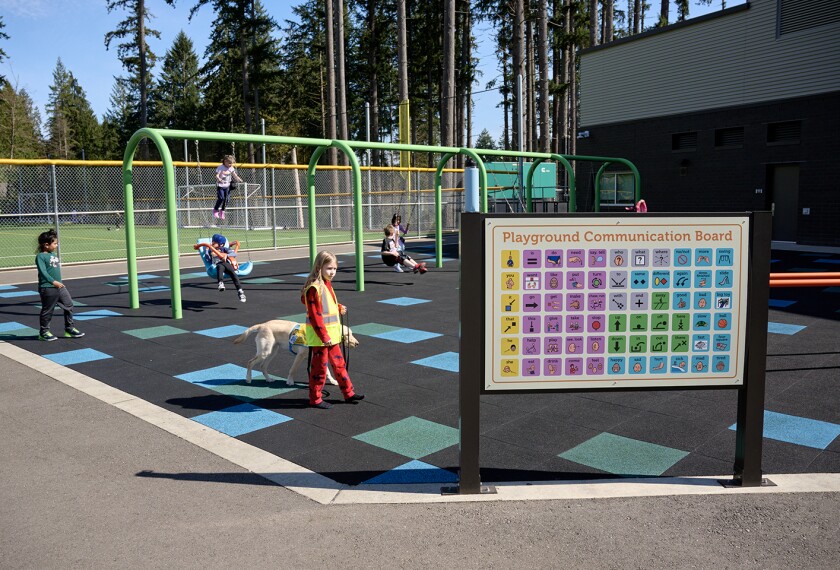Fostering a sense of belonging in school takes a lot of intentional effort, especially when it comes to students with disabilities, who have traditionally been excluded from many mainstream classes and activities.
That’s according to a principal who has dedicated her career to that cause.
Cathi Davis, principal of Ruby Bridges Elementary School in Woodinville, Wash., near Seattle which opened in 2020, runs a school that is designed so students with disabilities spend nearly all of their time in general education classes learning alongside their peers, rather than being pulled out for specialized instruction.
It’s one of 16 schools in Washington state that partner with the Haring Center for Inclusive Education at the University of Washington with the goal of demonstrating that all students benefit when schools are intentionally designed with the needs of students with disabilities at the forefront.
“We did a lot of planning to think about how we could really facilitate an opportunity for students to see themselves throughout the school, and to know that we thought of them in the design of the school,” Davis said during a webinar hosted by Education Week on May 23. “Really, that was less about architecture—that wasn’t about paint, that wasn’t about the parking lot. It was about our mindsets and our heart work that we were doing as a staff to think about how belonging could come off the page for each and every student.”
The approach diverges from the traditional K-12 education model through which students with Individualized Education Programs, or IEPs, are pulled out of classes with their peers into separate settings where they receive individualized or small-group instruction.
Ruby Bridges’ approach helps students with disabilities form relationships with their classmates and others in their school, and helps general education students build empathy and compassion. Several studies over the years examining these more inclusive practices have found either neutral or positive effects on all students’ performance in core subjects like math and reading.
“We know that all students benefit from that general education access,” Davis said. “We know learning’s not linear, and I think more and more we understand that our students are more engaged when learning is tailored to fit their needs and their strengths.”
In Ruby Bridges classrooms, all students have access to supports traditionally outlined in students’ IEPs or 504 plans, like the ability to take breaks when feeling overwhelmed, or the opportunity to learn in a small group with the teacher, while others might work independently on a tablet with headphones on.
During one recent phonics lesson she was observing, Davis recalled one student who was participating in a group lesson, but was bouncing on a trampoline at the same time to help regulate their senses.
“It’s that sense of truly being welcomed into a community, not like, ‘You get to be here, too, but over there,’” Davis said. "…But rather, we are all being together and kind of framing our identity around what that means for us.”
One of the keys to how Ruby Bridges works is its staffing model, which emphasizes collaboration.
For example, rather than having a designated paraprofessional assigned to each student who needs extra support, paraprofessionals work with different students all the time, meaning they could be providing math support in the morning and teaching phonics lessons to English learners in the afternoon.
In practice, the adults in the school are encouraged and required to work together to support students’ learning. “No one person is independently trying to support all of the learning of any one student,” Davis said.
“We’re looking at, what do kids need in this moment to be successful in their learning, and how do we support that best with the right person at this time?” Davis said. “How can we collectively share the load?”
For more on the discussion of creating communities of belonging for all students—including those with disabilities—and its academic and social benefits, check out the video above and Education Week’s recent special report about building strong student-school connections.









